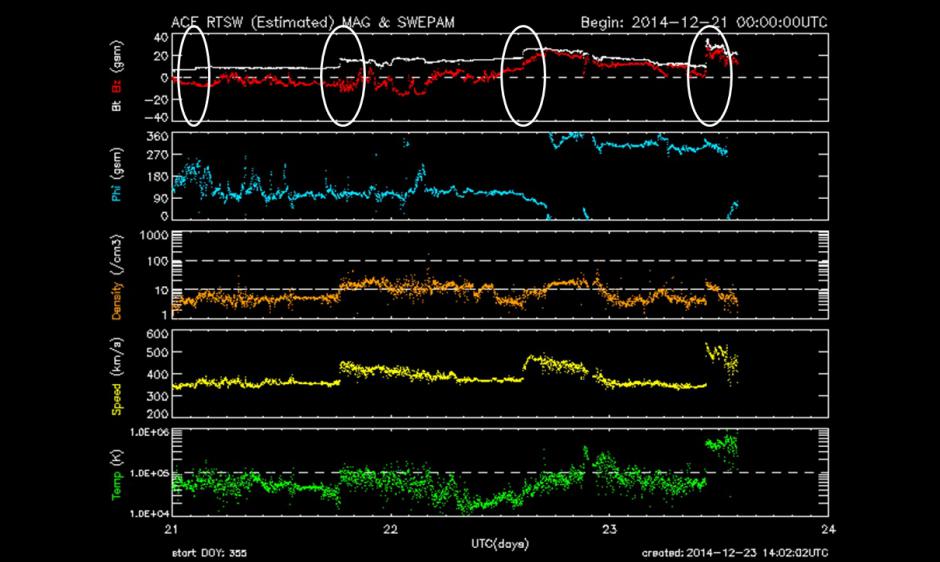
Following three previous coronal mass ejection (CME) arrivals over the past couple of days, a fourth CME arrived at Earth at approximately 1117 UTC (0617 EST) on 23 December. This CME was likely associated with an R1(Minor) radio blackout flare event that occurred on 21 December from NOAA Active Region 12241. However, when there are multiple CMEs occurring in a relatively short time span, exact attribution can be difficult. The arrival of the latest CME also brought with it elevated Proton flux levels. The enhancement briefly exceeded the S1-Minor alert threshold, but quickly returned to below S1 levels. Additionally, this increase in activity has also increased our chances of additional geomagnetic storm conditions. Currently, we are below the G1-minor alert threshold, but G1 -Minor storm conditions are possible throughout the remainder of today, with effects possibly spilling over into tomorrow (24 Dec). Stay tuned here for updates as they happen.